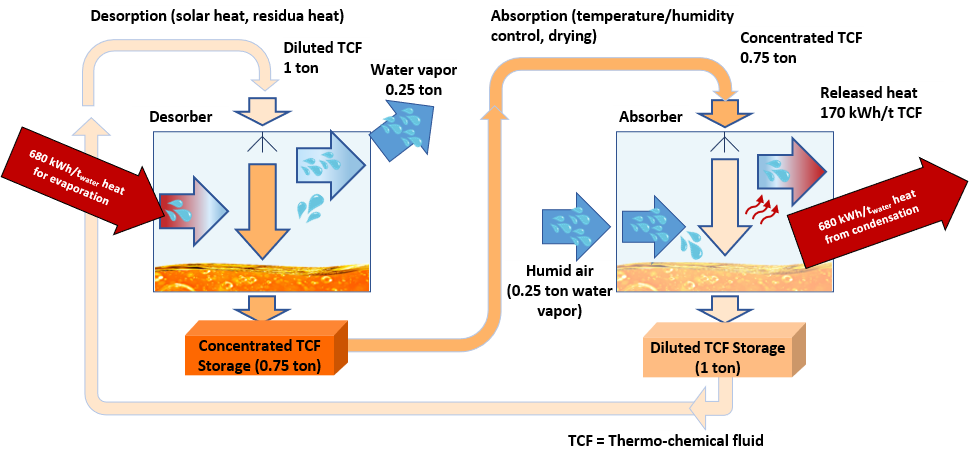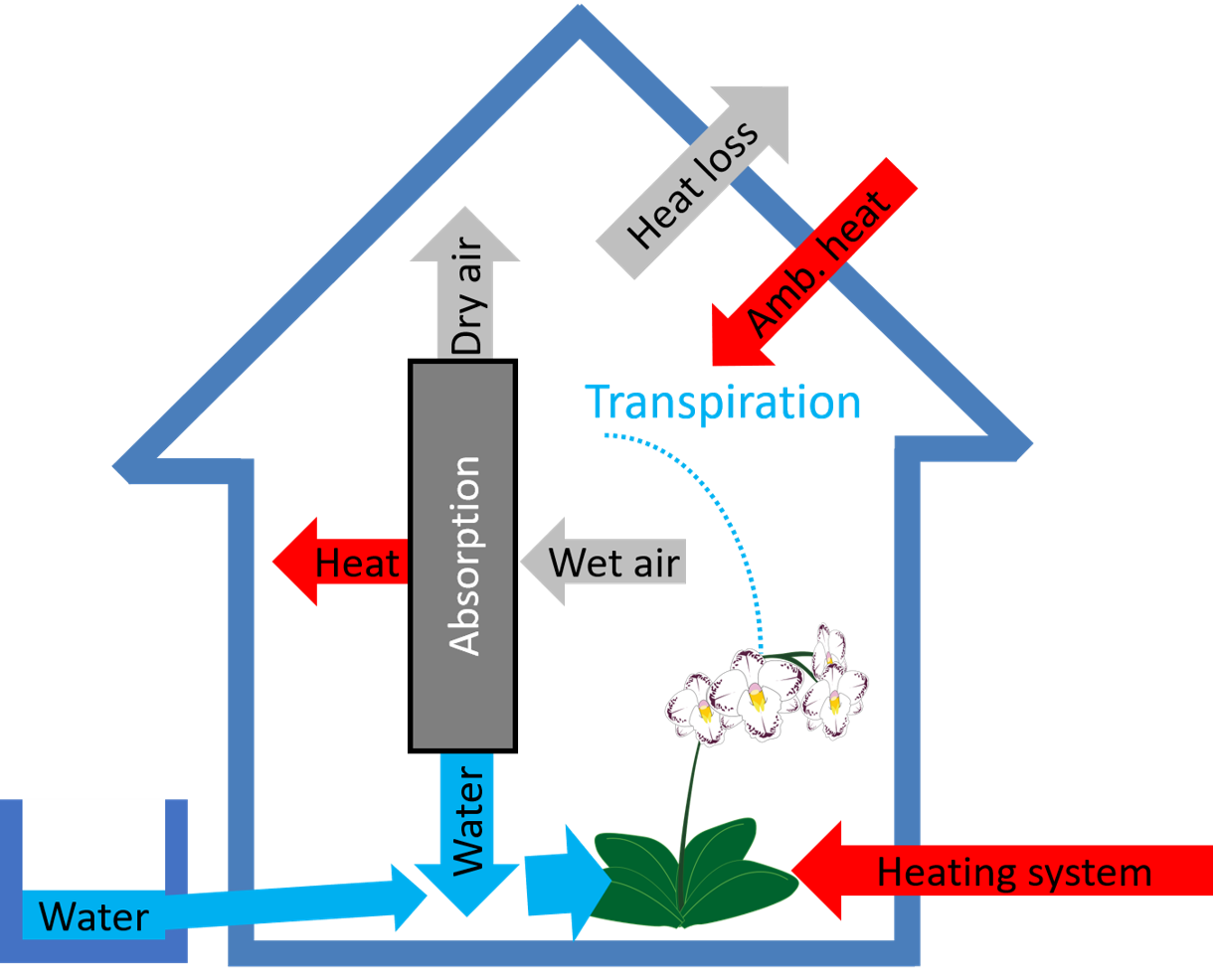Work programme
LC-FNR-06-2020 Defossilising agriculture – solutions and pathways for fossil-energy-free farming
October 2020
Starting month
EUR 4.6 million
Project cost
101000801
Project number
12 partners
Consortium
44 months
Project duration
EUR 4 million
EU funding
The overall concept underpinning the project is based on an innovative use of absorption processes in the greenhouse air-conditioning (also referred as sorptive air conditioning). This concept is achieved using the hygroscopic properties of fluid salt solution, here called thermo-chemical carrier fluid (TCF), which has the ability to provide multiple functions and services such as heating, cooling and de-/humidification within a single device, here called the absorber. An aqueous magnesium chloride solution (MgCl2) has been resulted the more appropriate (performance/cost) for the air control in the greenhouses (see H2020 project H-Disnet, (GA 695780).
When the TCF with a high concentration of hygroscopic medium gets in contact with the humid air produced by the transpiration of the plants in a greenhouse, it absorbs part of the air humidity releasing the latent heat of the humidity in form of sensible heat, appr. 1 ton of air humidity absorbed into the TCF as water, according to the phase change involved energy, it releases 680 kWh of heat (right part of the graphic below). The uptake of water dilutes the TCF.

When the TCF is diluted to a certain degree, the process can not be continued and the TCF must be regenerated.
The absorbed water must be driven out again. To do that, the same amount of energy as released by the
absorption process shall be reintroduced in the system, again appr. 680 kWh/ton evaporated water. The water is
released in form of water vapour taken up by dry air (left part of the aboved graphic). Heat source temperatures
below 60°C of are largely enough for the regeneration process, the exact temperature depends on the phase
equilibrium of pressure vapour between the TCF and ambient air.
The air conditioning in greenhouses is appropriate for this kind of applications because the plants release a large
amount of humidity through the transpiration, which requires to be removed. The TCF has the function to
remove this excess of humidity production and at the same time useful to produce heat (transformation of latent heat in sensible heat).

Develop the technological foundations for a new generation of greenhouse air conditioning, water recovery and food drying, validate the technology and demonstrate it in real cases

Establish modelling,
simulation, control,
planning and optimisation
tools for supporting
design and planning of the
system as a whole

Enhance the economic and environmental potential of the technology by reducing costs and increasing energy efficiency

Prepare a path to market by interacting with stakeholders, raise the awareness on the technology, by complying to or develop appropriate policies